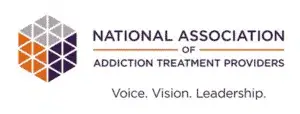Fentanyl addiction has become a public health crisis in Colorado and throughout the country. Although it is a prescription medication, fentanyl comes with serious risks and should never be taken without a doctor’s order. Even people who have a prescription for fentanyl can become dependent on the medication. Fentanyl addiction treatment is often necessary for those who continue using this medication despite experiencing serious consequences.
Fentanyl Statistics
According to the Centers for Disease Control and Prevention (CDC), there were nearly 92,000 fatal drug overdoses in the United States in 2020, and 74.8% of these fatalities involved opioids. Synthetic opioids, particularly fentanyl, were responsible for 82.3% of opioid-related deaths.
Additional fentanyl statistics include:
- DEA analysis of illegally produced fentanyl pills found that 42% of them contain at least 2 mg of fentanyl, which can be a lethal dose.
- Between January 2020 and January 2021, fatal overdoses from synthetic opioids like fentanyl increased by 55.6%.
- In 2021, there were over 800 fentanyl-related deaths in Colorado — a 260% increase from 2019.
Why Is Fentanyl So Dangerous?
Fentanyl is a dangerous drug because it is so strong. In fact, it is up to 100 times more powerful than morphine, meaning that just a small amount of it can cause a fatal overdose. Some drug dealers may use fentanyl as an additive in drugs like heroin or cocaine to make them stronger. This adds additional risk, as people may not even realize they are ingesting something as strong as fentanyl.
This Season, Give Yourself the Gift of a Fresh Start.
Whether you are struggling with addiction, mental health or both, our expert team is here to guide you every step of the way. Don’t wait— reach out today to take the first step toward taking control of your life.
With just a small dose of fentanyl, a person can begin to struggle to breathe. This ultimately leads to low levels of oxygen, which can cause coma, brain damage or even death.
Signs of Fentanyl Abuse and Addiction
If someone is misusing fentanyl, they will show some or many of these signs when under the influence of the drug:
- Intense happiness
- Drowsiness
- Nausea
- Sedation
- Confusion
- Breathing problems
- Constipation
When a person develops a fentanyl addiction, they will show signs of a substance use disorder (the clinical term for an addiction). Some signs that a person has developed a substance use disorder involving fentanyl include:
- Using larger amounts of fentanyl than intended
- Experiencing extreme cravings for the drug
- Spending a significant amount of time using fentanyl
- Needing larger amounts of fentanyl to achieve the same effects
- Experiencing withdrawal symptoms when not using fentanyl
- Giving up other activities and hobbies because of drug use
- Continuing to use fentanyl even when it causes problems in important relationships
- Using fentanyl in situations where it creates danger, such as driving while under the influence of the drug
- Being unable to fulfill duties at work because of drug use
- Continuing fentanyl use even when the drug causes or worsens a health problem
- Wanting to stop using fentanyl but being unable to do so
Fentanyl Addiction Treatment
When a person develops a fentanyl addiction, treatment is often necessary to help them stop using the drug. There are numerous treatment options available, including medical detox, inpatient and outpatient care, partial hospitalization and aftercare.
Medical Detox
Fentanyl addiction treatment typically begins with a medical detox program to provide patients with support and medication as they go through fentanyl withdrawal. Fentanyl withdrawal symptoms include:
- Pain
- Sleep disturbances
- Diarrhea
- Vomiting
- Cold flashes
- Involuntary leg movements
- Severe drug cravings
These withdrawal symptoms are uncomfortable and can make it difficult to quit fentanyl. Medical detox programs can administer medications to ease withdrawal symptoms and make it easier for people to stop using fentanyl.
Inpatient Treatment
Medical detox is just the first step in the addiction treatment process. After going through detox, most patients transition into an inpatient treatment program. In these programs, patients live onsite at the rehab center as they receive addiction treatment. Inpatient facilities provide a variety of services, including individual and group counseling, 12-step meetings, medication management and recreational therapies.
Outpatient Treatment
Some patients begin with an outpatient program after completing detox, while others “step down” to outpatient care after undergoing an inpatient program. The difference between inpatient vs. outpatient treatment is that patients continue to live at home while in outpatient care. They attend appointments for counseling, medication management and other services at a facility but return home afterward.
Partial Hospitalization Program (PHP)
A PHP is an intensive and highly structured form of care that provides at least 20 hours of service per week. These programs allow patients to continue to live at home or at the facility, but they receive daily or almost daily monitoring at a treatment center. Patients in PHP may report to a facility for four hours per day each weekday, for example, or continue to live onsite. Patients receive a variety of services while in PHP, including individual and group counseling, medication management and medical services.
Aftercare
After patients complete fentanyl rehab, they often benefit from participating in aftercare services to prevent relapse. Aftercare programs provide ongoing support, such as support group meetings and relapse prevention plans.
How Long Does Treatment for Fentanyl Addiction Take?
The length of time a person spends in fentanyl addiction treatment depends on their unique needs and the severity of their addiction. According to the National Institute on Drug Abuse, people generally need to spend at least three months in treatment in order to stop their drug use. Treatment is an ongoing process, and staying in treatment for a longer time is associated with better outcomes.
Benefits of Seeking Professional Treatment for Fentanyl Addiction
If you or someone you love lives with a fentanyl addiction, there are numerous benefits associated with seeking treatment. Fentanyl is a highly addictive drug, and because withdrawal symptoms are so severe, it is nearly impossible to stop using the drug without professional intervention. Professional treatment centers can provide medications to ease withdrawal symptoms and reduce cravings.
Fentanyl treatment programs also provide counseling services to help you overcome the underlying issues that have led to addiction. These services can help you to identify your triggers for drug use, develop the skills to cope with stress and learn ways to prevent relapse.
About Our Rehab Facility in Palmer Lake, CO
If you or a loved one is in need of fentanyl addiction treatment in Colorado, The Recovery Village Palmer Lake is here to help. We offer a full continuum of addiction treatment programs, including medical detox, inpatient and outpatient care, partial hospitalization services, and aftercare programming.
Our 110-bed inpatient facility is situated just outside of Colorado Springs, in a scenic location that offers mountain views, a heated pool, two fully equipped gyms and a basketball court. All of our treatment programs provide evidence-based services, and we create individualized treatment plans for each client.









